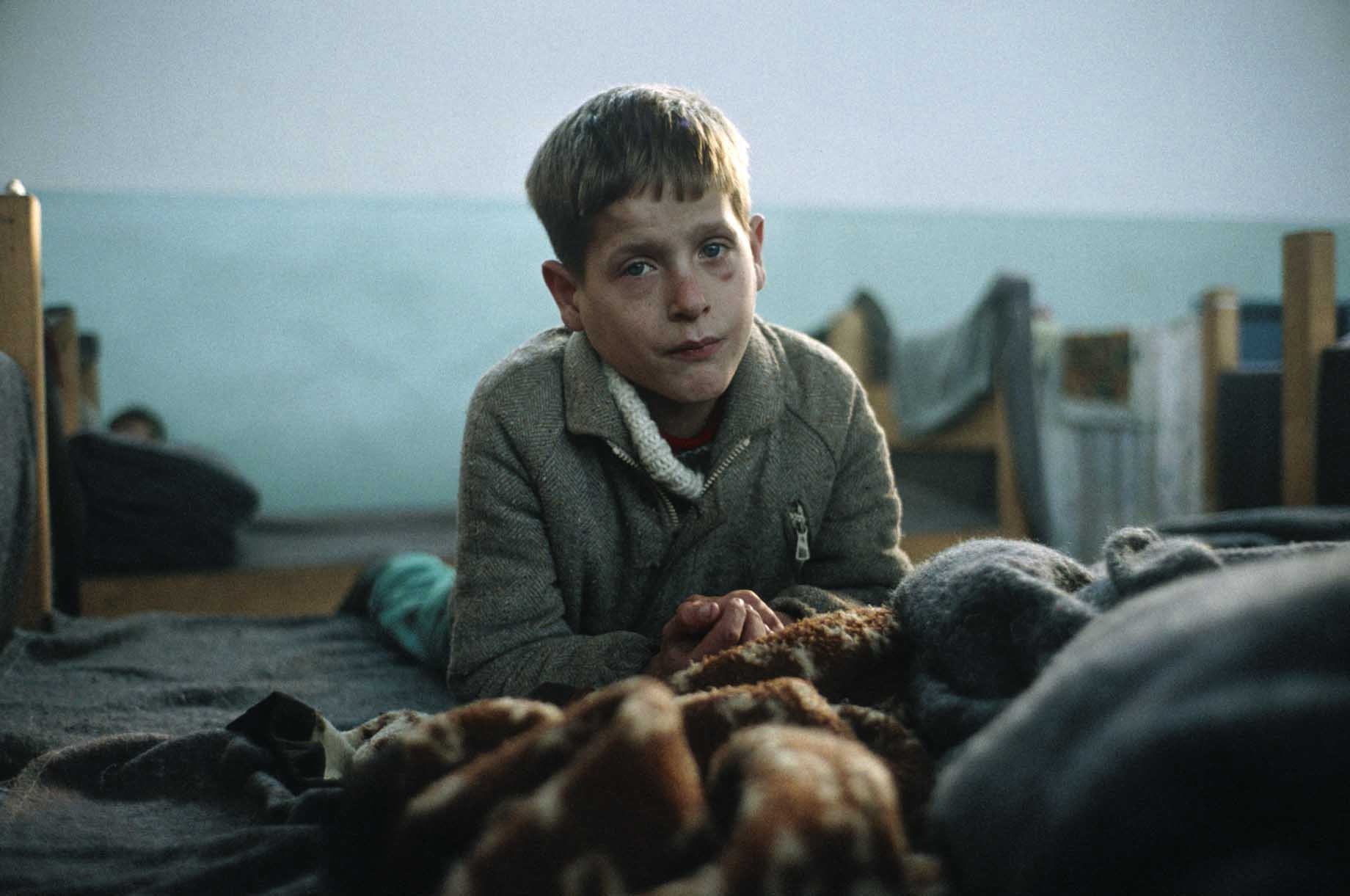Unit plan for ages 9-11 in Civic Education: Refugee Children
Unit plan for ages 9-11 in Civic Education: Refugee Children
-

The fighting in Bosnia and Herzegovina caused families to flee their homes in search for safety and shelter. Many people, like this boy, made their way to collective centres.
UNIT OBJECTIVES
Knowledge
- To understand the abnormal and trying conditions in which refugee children live and endure
- To introduce the idea that people's basic needs are considered rights
Skills
- To practise extracting factual information from written material
- To apply imaginative thinking to the situations of refugee children
- To develop discrimination and discernment
- To develop skills in negotiation and teamwork
Values

Cover of the "One Day We Had to Run!: Refugee Children tell Their Stories in Words and Paintings" (Evans Brothers Limited, London).
- To encourage empathy by having the students imagine themselves in Jacob's situation and how they would cope with the difficulties which refugee children must face
- To encourage in the students respect for others through exposure to a lifestyle very different from their own
- To develop in the students a desire to seek solutions to problems, which do not violate the rights of others
- To help students differentiate between things that they want, and things that they need
LESSON 1: Jacob's story
| ||||||||
LESSONS 2 and 3: Childrens' Rights
| ||||||||





